Geology 6-12
The Ring of Fire is a region of the Earth’s crust that is home to many volcanoes and earthquakes. It is a vast area that stretches around the Pacific Ocean, and it is responsible for some of the most destructive natural disasters in history. In the Montessori curriculum, students learn about the Ring of Fire as part of their study of geology. They learn about the different tectonic plates that make up the Earth’s crust, and how these plates move and interact with each other. They also learn about the causes of volcanoes and earthquakes, and how these natural disasters can impact the environment.
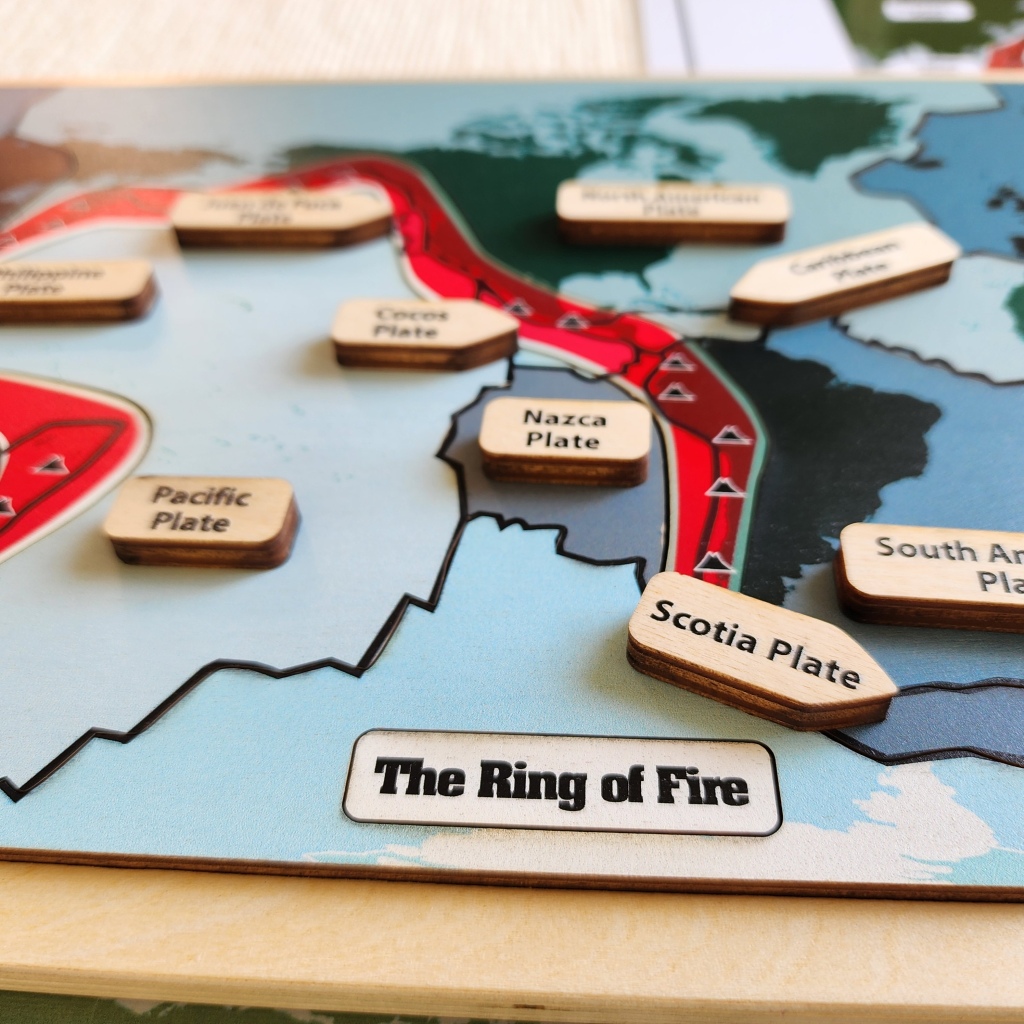
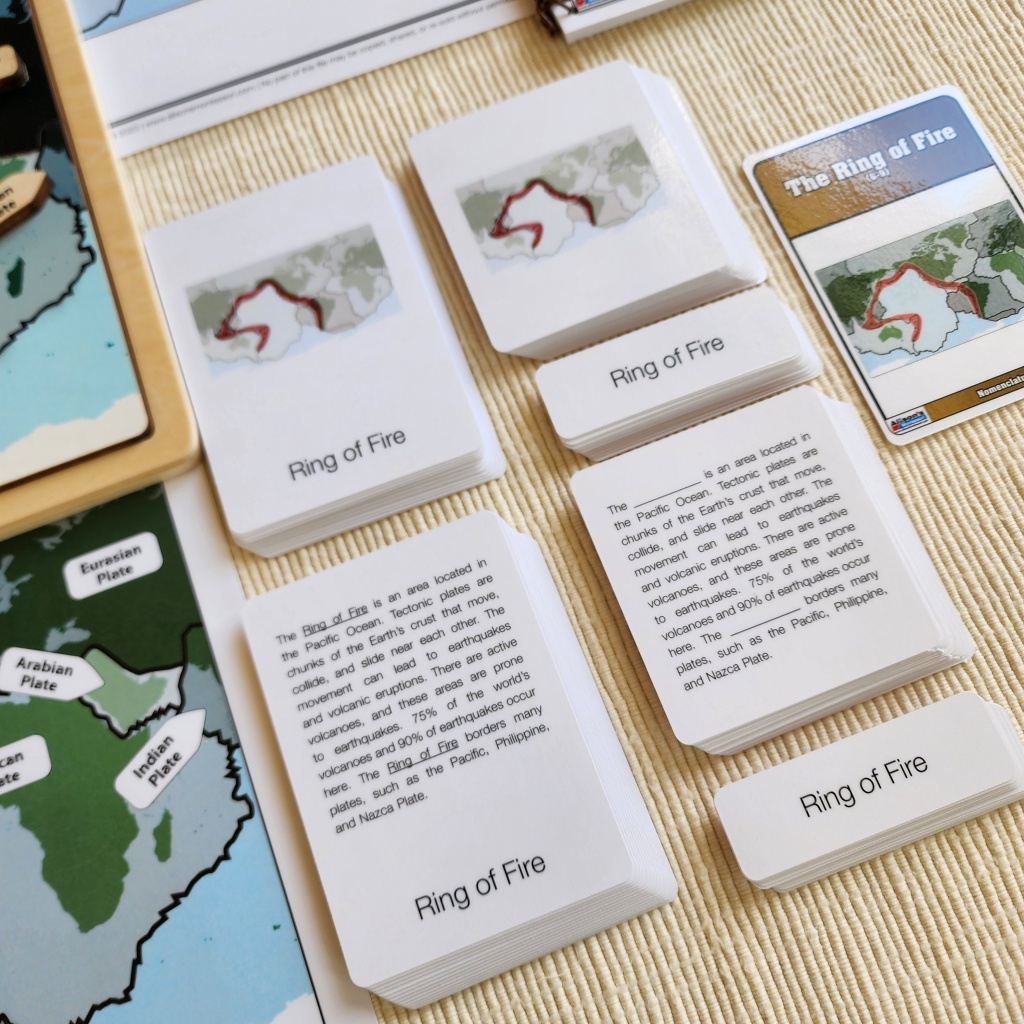

One of the best ways to teach students about the Ring of Fire is to use a hands-on activity. At Alison’s Montessori, you will find a variety of materials that can be used to teach this topic, The Ring of Fire Puzzle with Nomenclature Cards (6-9), which includes a large wooden puzzle with movable parts, corresponding arrows to label the different tectonic plates, 6-part nomenclature cards, and control charts. To use these materials, you would first introduce the concept of the Ring of Fire to the students. You would then explain how the tectonic plates move and interact with each other, and how this can lead to volcanoes and earthquakes. Check out below a list of all related materials that can support this topic.
Materials
- Parts of The Ring of Fire Puzzle
- The Ring of Fire (Nomenclature Cards) (3-6)
- The Ring of Fire (Nomenclature Cards) (6-9)
or our complete sets:
- The Ring of Fire Puzzle with Nomenclature Cards (3-6)
- The Ring of Fire Puzzle with Nomenclature Cards (6-9)
Related materials:
- Anatomy of a Tectonic Earthquake Puzzle with Nomenclature Cards (6-9)
- Plate Tectonics Complete Set
- Parts of a Volcano Nomenclature Cards (6-9)
- Parts of a Volcano Puzzle
Description of the Materials
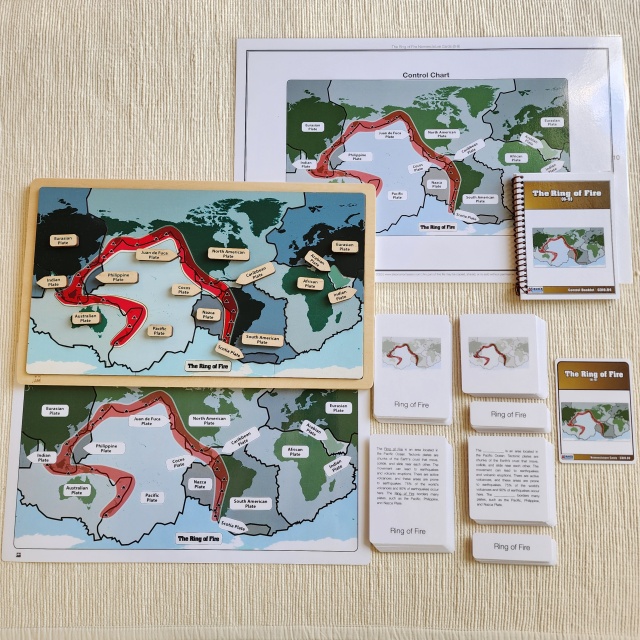
You may introduce the topic by asking questions to reactivate prior knowledge and as a diagnostic assessment: What are the different types of volcanoes? What are the different types of earthquakes? Have you heard of the Ring of Fire? What are some of the natural disasters that have been caused by the Ring of Fire?
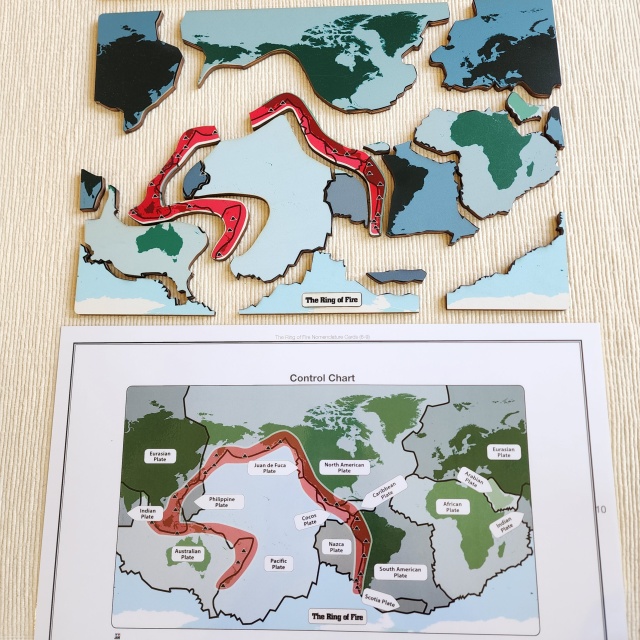
You may encourage your learners to take the puzzle apart, to visualize the various plates. Some plates are substantial while others are much smaller. Learners will likely notice the larger plates first such as the Eurasian, Pacific, and North American plates. Learning by chunk helps learners assimilate knowledge. You may read the description for these large plates first using the Control Booklet, which provides interesting facts.

Learners can continue to study the different plates around the Ring of Fire independently by spotting plates, and labeling them while reading the descriptions in the Control booklet.

Later, learners can challenge themselves by labeling as many plates as possible using the puzzle, the wooden arrows, and the corresponding control chart.
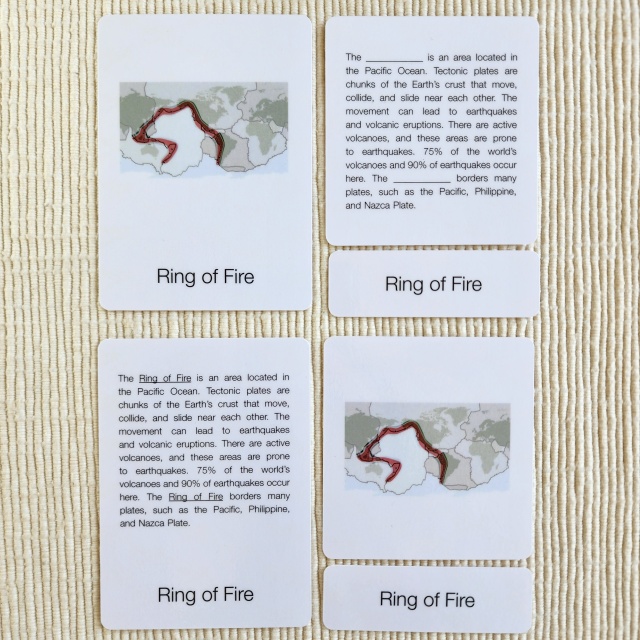
In addition, they can use the 6-part nomenclature cards to assess their progress. For beginners, we recommend reading the description/ cards (bottom left in the picture) and matching them with the corresponding picture with the label. For more advanced learners, we recommend using all the picture/label cards (top left in the picture) and matching them with the corresponding picture with the label.
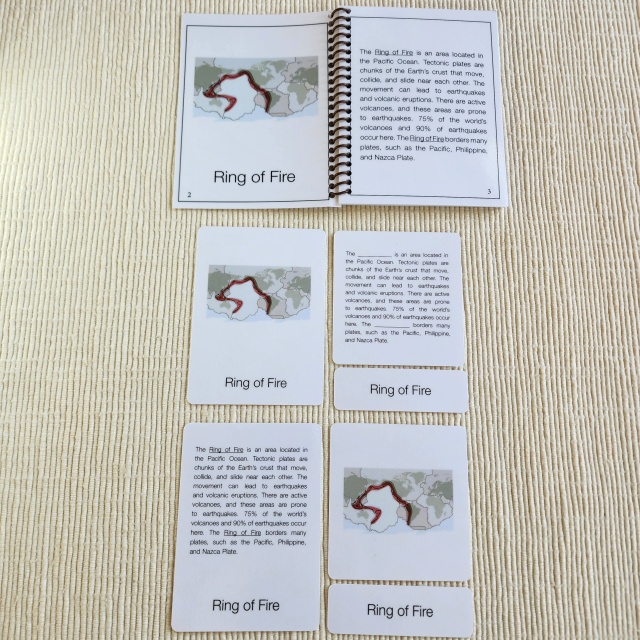
Learners can use the control booklet to check their work. We encourage learners to also work with partners to increase engagement and enhance retention through conversation.
There are many benefits to learning about the Ring of Fire. It helps learners develop a better understanding of the Earth’s crust and how it works. This knowledge can be helpful in many different contexts, such as when learners are studying other natural disasters (volcanic eruptions, earthquakes, Tsunamis), or when they are learning about the history of the Earth (Timeline of Life, the Great Stories).
Ready for a lesson? Check out my next post on the Napier’s Local Arithmetic Board! Subscribe for more: